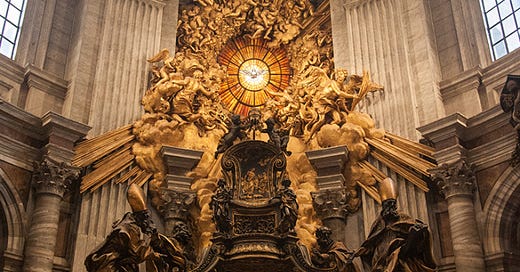The Octave of Church Unity was first conceived by Father Paul Wattson of Graymoor on November 30, 1907, before his entrance into the Catholic Church. The initial success in 1908 was so encouraging that he decided to promote it annually, and he regarded the Octave as one of the special means which brought his Society of the Atonement into the Church on October 30, 1909. It was given papal blessings by pope St. Pius X on December 27, 1909, just two months after the Society of the Atonement had entered the Catholic Church. Other popes have given it their blessings over the years, including Pope Saint John XXIII (who urged its observance more widely throughout the world) and Pope Paul VI (who had promoted it in his archdiocese when he was the Cardinal Archbishop of Milan). Father Paul considered the Octave as the greatest project which came from Graymoor, even though it was overshadowed by the less-specific "Week of Prayer for Christian Unity" during his own lifetime.
The Octave, as originally conceived by Father Paul, reflects the unchanging truth that there can be no real unity apart from union with that Rock, established by Christ Himself, which is Peter and his successors. For that reason, St. Peter is considered the special Patron of the Octave of Prayer for Christian Unity.
So how did it transform into the “Week of Prayer for Christian Unity”?
Abbé Paul Couturier of Lyons, France, had a different approach from that of Father Wattson, he advocated prayer "for the unity of the Church as Christ wills it, and in accordance with the means he wills.” In 1935, he proposed naming the observance "Universal Week of Prayer for Christian Unity,” a proposal accepted by the Catholic Church in 1966. In 1941, the Faith and Order Conference changed the date for observing the week of unity prayer to that observed by Catholics. In 1948, with the founding of the World Council of Churches, the Week of Prayer for Christian Unity became increasingly recognized by different churches throughout the world.
In 1958, the French Catholic group Unité Chrétienne and the Faith and Order Commission of the World Council of Churches (a body which includes, among others, most of the world's Orthodox churches as well as many Anglican, Baptist, Lutheran, Methodist, Reformed, United and Independent churches) begin co-operative preparation of materials for the Week of Prayer. The year 1968 saw the first official use of materials prepared jointly by the Faith and Order Commission and the Pontifical Council for Promoting Christian Unity, representing the Catholic Church. Collaboration between these two organizations has increased steadily since, resulting in joint publications in the same format.
Notice that the traditional “Octave of Church Unity” was created by an Anglican and brought about his own conversion and that of his entire religious community to the Catholic Church, meanwhile the more nebulous “Week of Prayer” was created by Catholics to make Protestants feel more comfortable.
This week at St. Mary’s, we will be praying the traditional Octave prayers. The intentions for each day of the Octave can be found in this week’s Newsletter.



